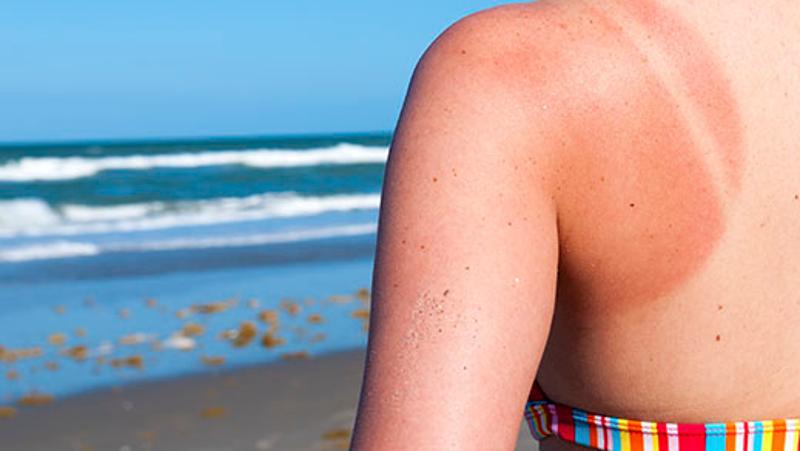
Getting sunburnt could be another rebellious rite of passage for young people, says QUT public health researcher Dr Elke Hacker who is testing new UV detection wearables to try to make sun safety part of daily routine.
“Throwing off the ‘rashie’ Mum’s made you wear or not putting on a hat after years of ‘no hat, no play,’ are like other risky behaviours such as drinking alcohol or speeding that young people seem to indulge in,” said Dr Hacker from QUT’s Institute of Health and Biomedical Innovation.
“This might explain why 30 per cent of young study participants who either wore a personalised UV monitor or used the SunSmart app for a month reported deliberate sun-tanning during the study.
“Sunburn rates were also high with 58 per cent of the 107 participants reporting one or more sunburns in their daily sun exposure diaries during the study.”
Dr Hacker said one group of participants wore a brooch-like UV monitor personalised to their skin type which gave an alert when they had reached their skin’s UV threshold for the day.
A second group used the free SunSmart phone app which displayed the daily UV index, daily time periods when sun protection was most needed and recommendations for sun protection measures.
“The group who wore the UV monitors improved their sun protection on weekends during the four-week intervention by an average of 58 minutes each day, a 59 per cent reduction from baseline exposure in those who improved,” Dr Hacker said.
“What was a really great finding was that the UV monitor group had reduced their weekend unprotected sun exposure by an average of 61 minutes a day after three months. So, for many in this group, a sustained improvement in weekend exposure had been formed.
“The SunSmart app group also reported a continued reduction of their weekend sun exposure three months after the study compared with their sun protection at the start, but not as great a reduction as the monitor group.
“In both groups, however, there were a number of participants who did not make any changes to their unprotected sun exposure. They are prepared to take the risk of skin cancer.”

Dr Hacker said the results showed promise that personalised wearable devices which are set to how sensitive your skin is to the sun do work to prompt sun protection. However, the young participants said they wouldn’t wear a brooch-like device.
“We took all of this on board and are now testing high-tech, good-looking UV-detecting wearables from the UK and USA before trialling them in a follow-up study.”
The study “A mobile technology intervention in skin cancer prevention with UVR dosimeters and smartphone applications in young adults” is in JMIR MHEALTH AND UHEALTH.
QUT Media contacts:
Niki Widdowson, 07 3138 2999 or n.widdowson@qut.edu.au
After hours: Rose Trapnell, 0407 585 901 or media@qut.edu.au.


